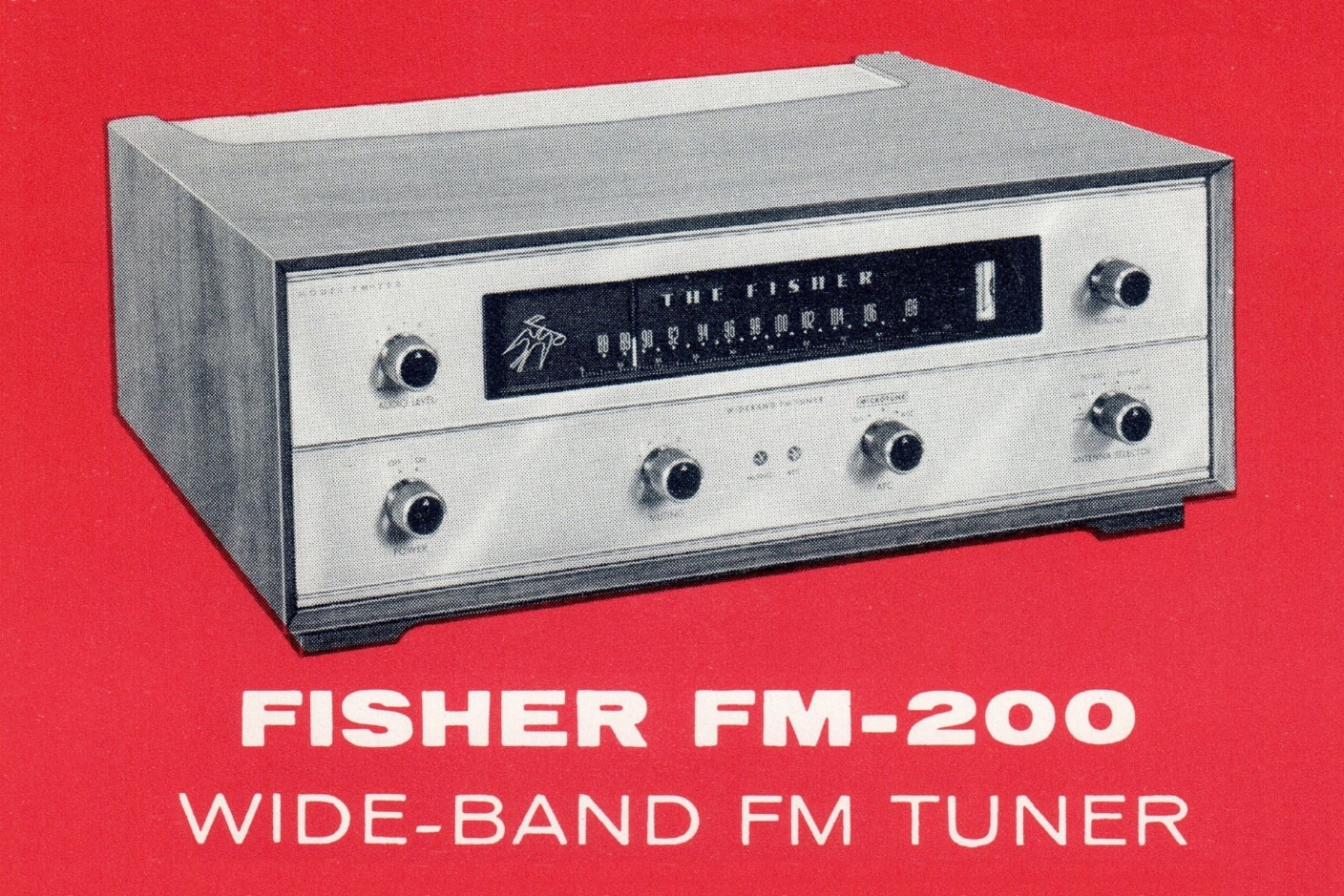
In the Fall of 1960, Fisher introduced what was its best ever (up to that time) FM tuner. The FM-200 was first advertised in the November 1960 issue of High Fidelity magazine, and it was an incredible bargain at $229.50 considering that less than a year later, the full FM Stereo FM-1000, Fisher’s “tuner of tuners”, would be on the market at almost double the price.
Like the FM-1000, the FM-200 includes a tuned RF section and six stages of IF amplification. The differences? The FM-1000 would include a built-in multiplex decoder for FM Stereo reception; a four-gang tuning condenser (the FM-200 had a three-gang unit), and some additional bells and whistles such as a VU meter and two levels of automatic frequency control (AFC) in addition to Fisher’s Microtune circuit.
Microtune was an automatic AFC circuit which would be automatically disabled when the user placed his or her hand on the tuning knob. Once the user tuned in a station and removed his or her hand from the tuning knob, as long as the AFC switch was in the Microtune position, Microtune would kick back in and hold the station in place.
The first Fishers to use Microtune were the 202-R and the FM-200. Oddly enough, when Fisher first advertised the 202-R in September 1960 (also in High Fidelity), the Fisher ad of the time referred to the special circuit as AutoTune. Apparently, someone else must have owned the rights to that name as Fisher quickly switched to using the Microtune name instead. I am not aware of any 202-R or FM-200 tuners having been produced with AutoTune silkscreened on their front panels.
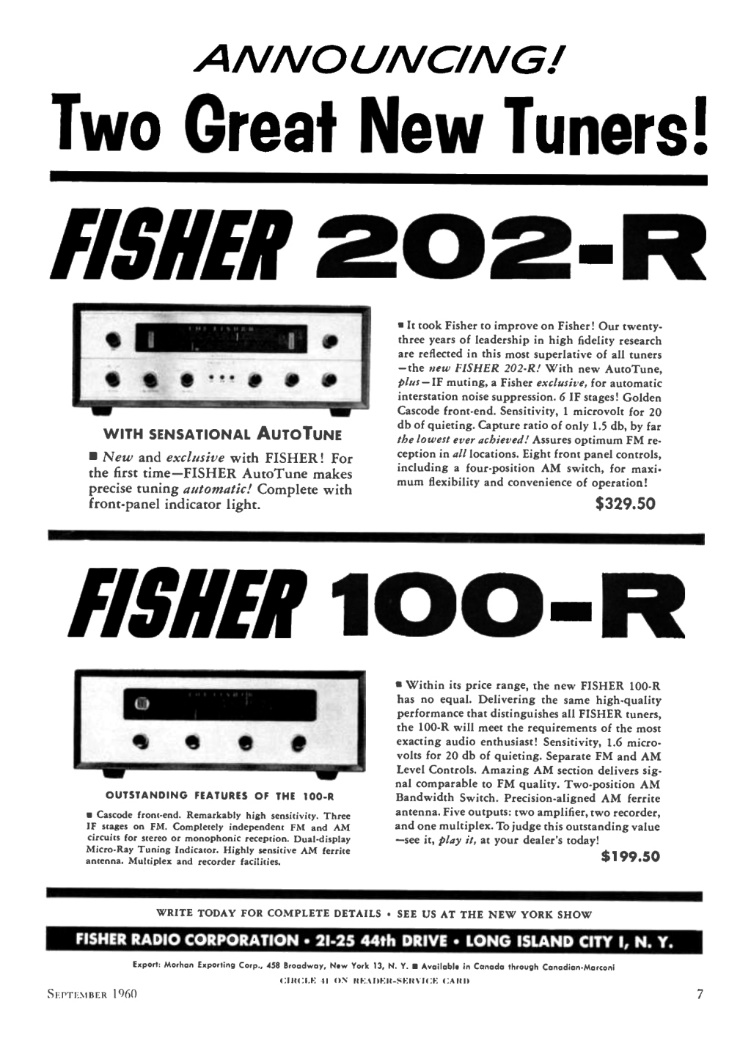
September 1960 ad for The Fisher 202-R and 100-R tuners. Notice it mentions AutoTune instead of Microtune.
The FM-200 was the best FM tuner Fisher had produced up to that time. It’s too bad that it was only on the market less than a year. Once the FCC issued an FM multiplex stereo standard in April 1961, though, manufacturers rushed to put FM Stereo equipment on the market. The older FM mono tuners and receivers could also receive FM Stereo, but required a separate multiplex decoder to do so.
After the summer of 1961, Fisher no longer manufactured monaural FM tuners or receivers. The FM-200, despite its superior performance, became instantly obsolete. It would be replaced with a new tuner with a built-in FM multiplex decoder, the FM-200-B. The FM-200-B only had five stages of IF amplification, though.
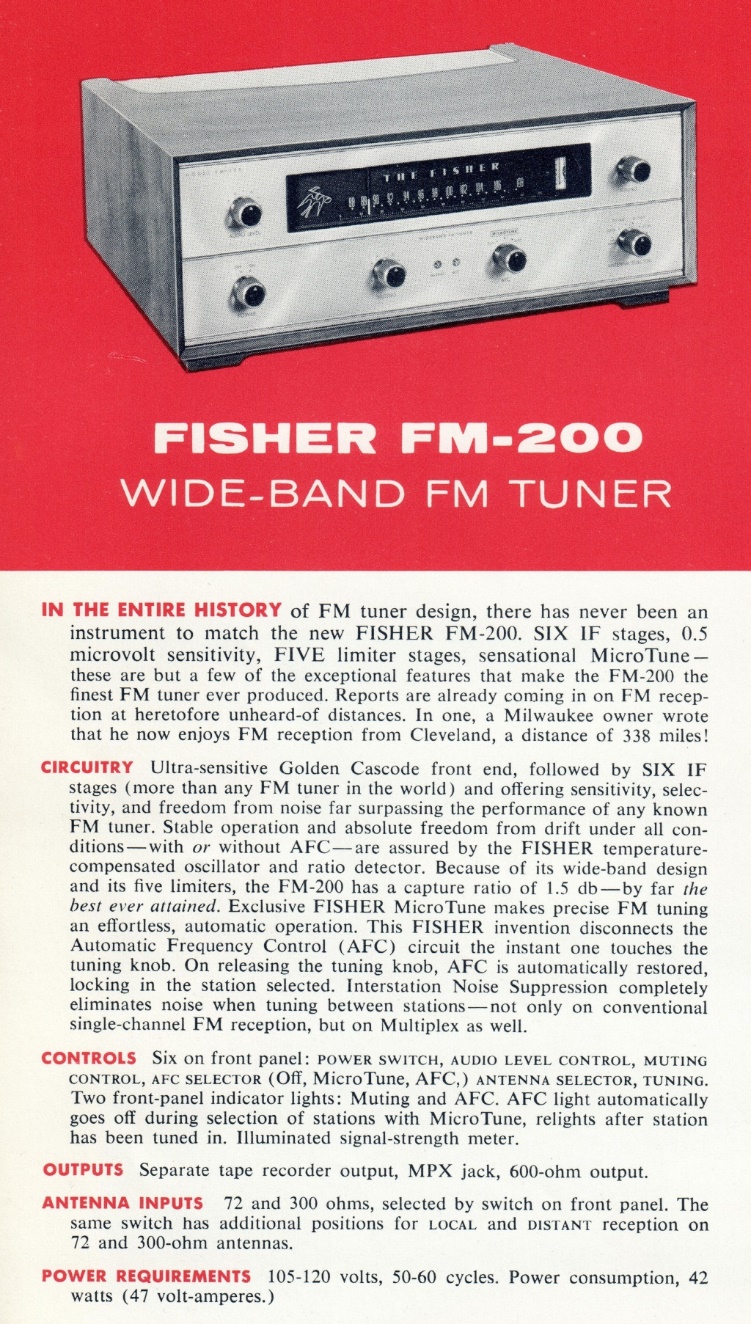
As you may recall, I had written about three Fisher items which were still on my want list – the 800-B receiver, the 202-T tuner-preamp, and the FM-200 tuner. Well, I think I can scratch the FM-200 off my list. At least I hope so.
I hope so?
Yes – for I recently acquired a sort of “kit” FM-200. I purchased the barebones chassis from an eBay seller, and it arrived on Monday, November 30.
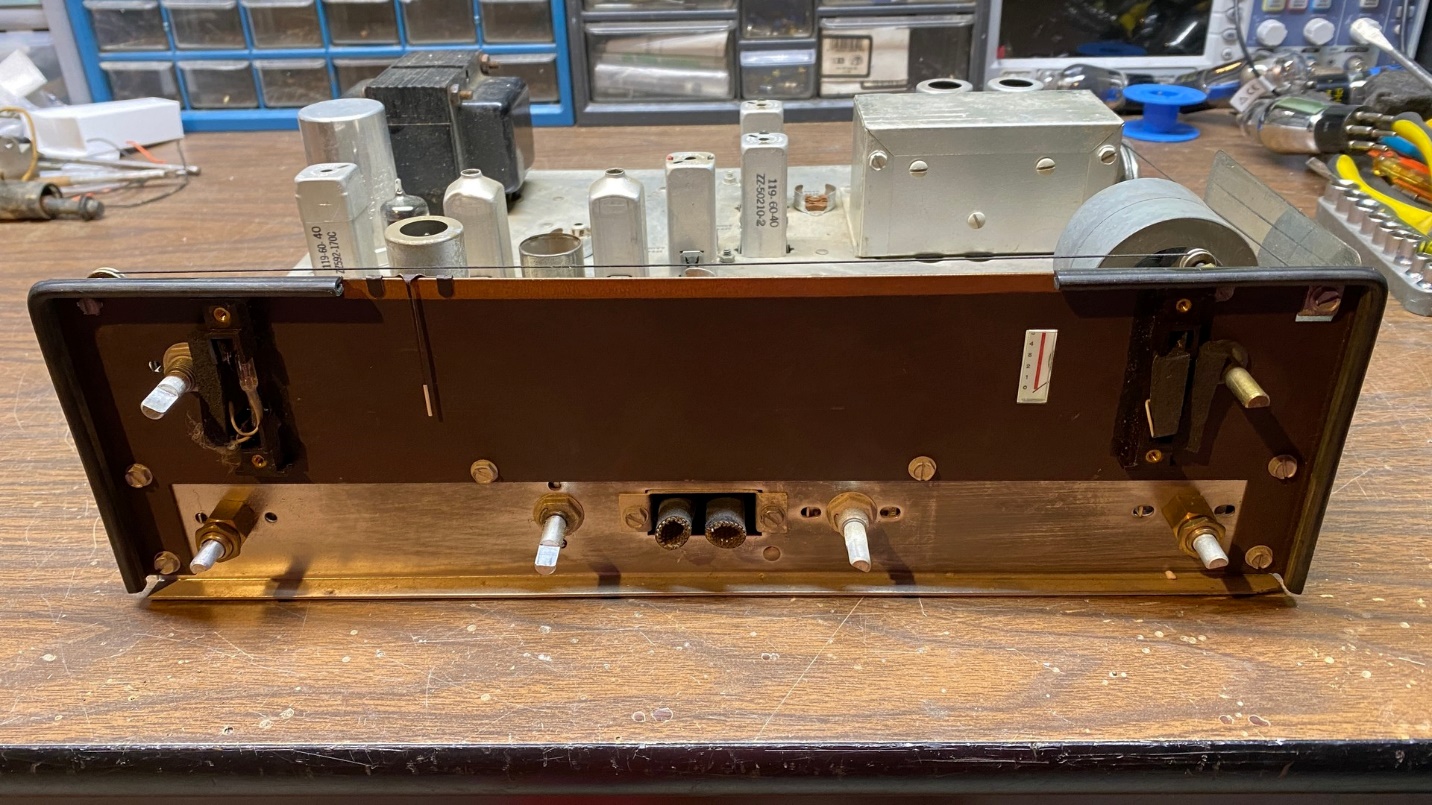
FM-200 barebones chassis. Missing a lot, but all the important stuff appears to be present and accounted for.
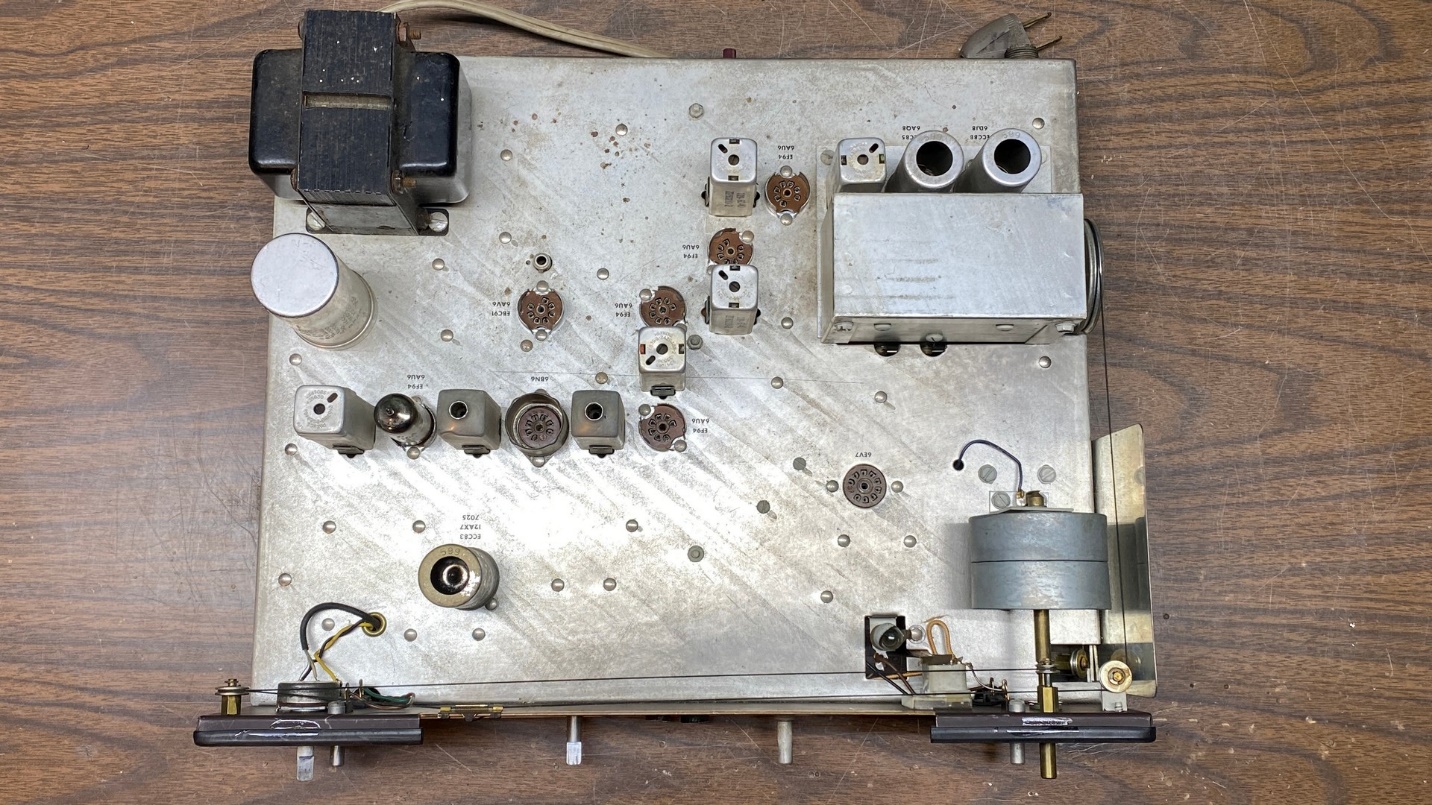
Top view of the FM-200 barebones chassis. Notice the double flywheel on the tuning shaft.
It is apparent that the chassis was worked on by someone in the past, as some capacitors have been replaced. Perhaps whoever worked on it only went so far with it before giving up and parting it out, since it was missing its front panel, knobs, dial glass, and bottom cover.
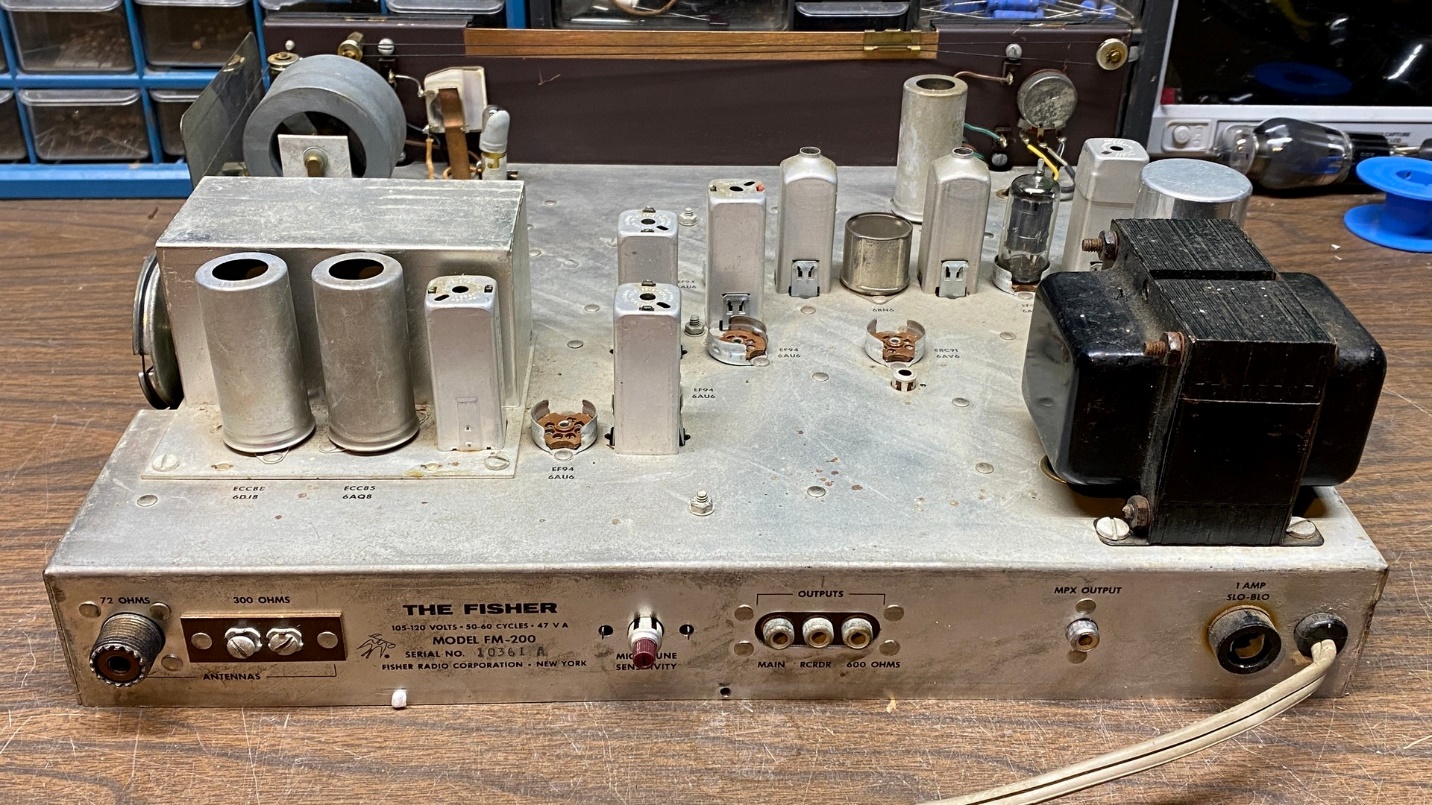
Rear view of the FM-200 chassis. Obviously it will need a new fuse holder – easily replaceable.
The chassis was cheap, so I decided to take a chance on it. Since all the important parts are present and accounted for (including but not limited to the tuning condenser, all IF transformers, and power transformer), I am hoping it can be brought back to life.
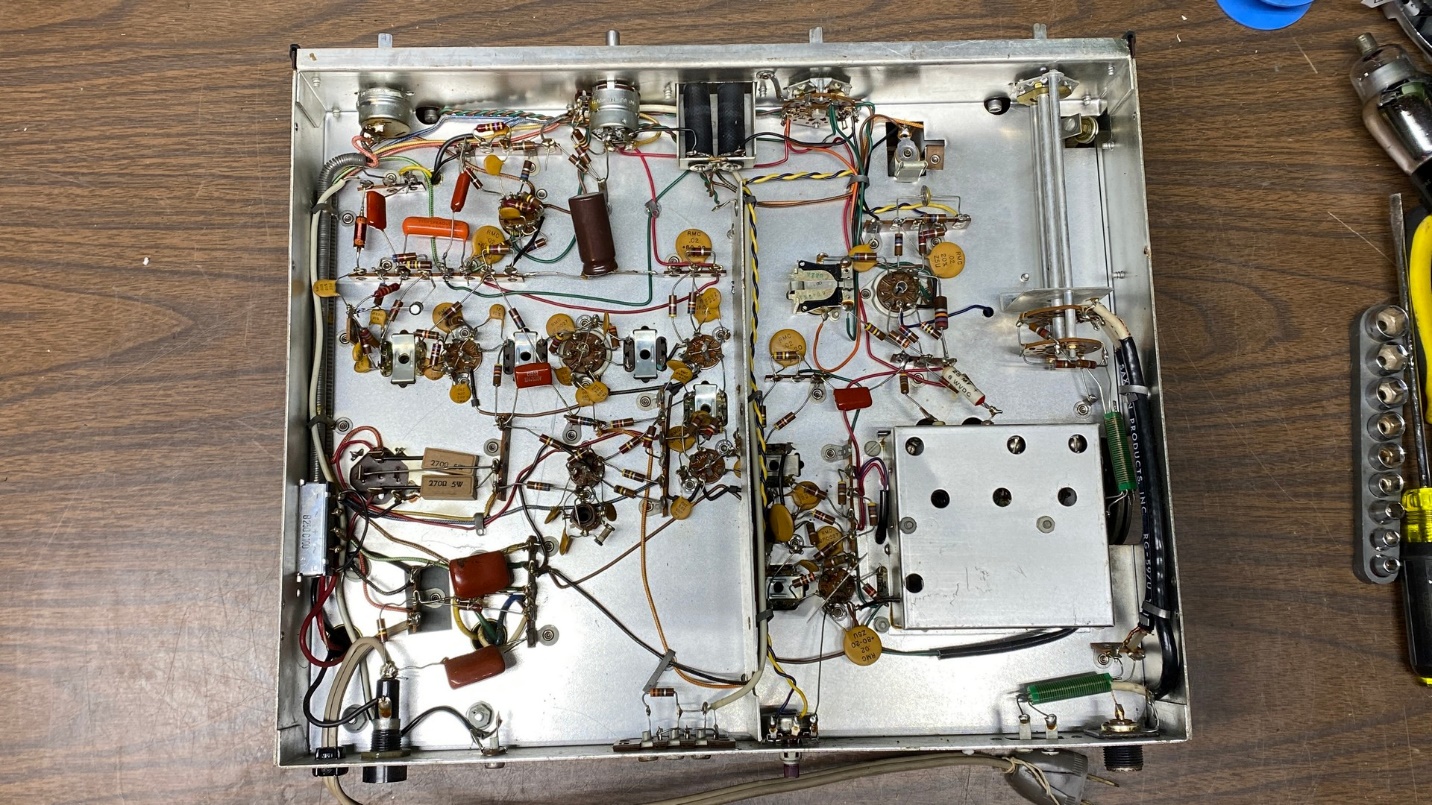
Bottom view of the FM-200 chassis. Nothing important appears to be missing.
I also found, and purchased, a front panel and dial glass from a different eBay seller, who accepted my offer for the two parts. These were supposed to arrive on Tuesday, December 1. But leave it to USPS, the most inefficient “business” (actually an independent agency of the Executive Branch of the Federal Government) in this country – they have apparently lost the package. It was sent from Pennsylvania via Priority Mail (which is meaningless these days) on November 27. It made it as far as Lancaster, PA that evening before falling off the radar. Now the tracking information only states “In Transit, arriving late.”
If no front panel and dial glass had been available, I would not have purchased the barebones tuner chassis. I will wait until next week before I start thinking about giving up on the front panel/dial glass package, though.
So, I set about looking to see if I had all the necessary tube shields and tubes. I had enough tube shields, but not all the needed tubes. An order from Bob at findatube.com will take care of the four tubes which I do not have (6AV6, 6BN6, 6DJ8/ECC88, 6EV7).
I have placed ads for a bottom panel and knobs for this chassis. No answers so far. If I ever receive the package containing the front panel and dial glass, I may end up using 1966-69 Fisher transistor equipment knobs instead as I have several of those. I am not sure what I will do about a bottom panel, other than keep on advertising for one.
I think I would like to make this my Christmas 2020 project, even if it is not complete. I can still try to get it running again. For those of you who do not know this, each year around Christmastime I select a radio or piece of audio equipment to restore as a Christmas present to myself. It has become a tradition as I have done this for several years now. So, look for me to take a break from the current Philco 38-690 project about mid-month and start working on this FM-200 chassis.